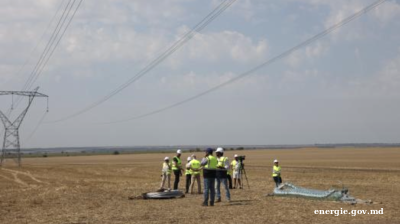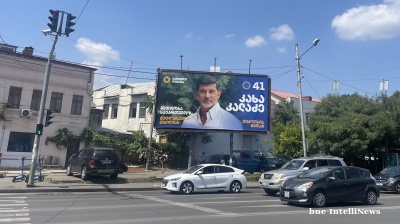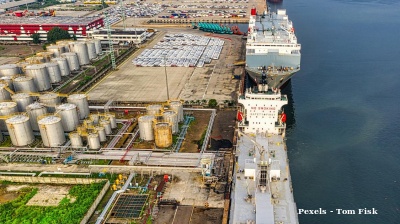The outbreak of deadly clashes in Syria’s southern Suwayda province last week exposed the deep fragility of the country’s post-Assad landscape, reflecting both internal divisions and growing regional interference.
The scale and intensity of the violence raise serious concerns over the ability of the transitional authorities in Damascus to restore security across the entirety of the country, prevent further disintegration in all regions and counter foreign players whose actions undermine plans to restore unified rule throughout Syria.
The violence in Suwayda was triggered by a confrontation between local Druze militias and Bedouin tribesmen – both communities with deep-seated historical grievances and competing claims to land and influence in the region. However, the fighting soon deteriorated into a full-scale conflict involving transitional government forces and, eventually, Israeli airpower. Tensions rapidly escalated into four days of intense clashes.
The tensions quickly resulted in a high death toll and heavy casualties. According to a report by the Syrian Network for Human Rights, the number of dead is at least 558, while 783 or more were injured.
The Druze militias are primarily drawn from local communities in Suwayda. They have long operated with a degree of autonomy. That was particularly the case during the Syrian war that lasted from 2011 through to the toppling of former strongman Bashar al-Assad in December.
While some factions cooperated with the former Assad regime, many resisted central authority, demanding autonomous local governance and the protection of their cultural and religious identity (the Druze, an Arab esoteric group, follow a faith that originated in Ismailism, a branch of Shia Islam). In the violence, many Druze fighters mobilised rapidly in response to reported attacks and kidnappings by Bedouin tribesmen, leading to intense clashes.
The Bedouin Tribes, Sunni by sect and historically marginalised in the region, have intermittently clashed with the Druze over land rights and political representation. According to local media, the showdown started when Bedouin fighters established an unauthorised checkpoint and assaulted a Druze civilian – an incident that quickly spiralled into tit-for-tat violence.
The Syrian Government Forces, led by interim president and former jihadist al-Qaeda and al-Nusra Front rebel commander Ahmad Hussein al-Sharaa, intervened ostensibly to restore order. However, reports suggest that elements of the government-aligned forces sided with Bedouin factions, engaging directly in clashes with Druze militias. That severely undermined the government’s credibility among Druze communities, especially after accusations of civilian deaths, looting and destruction of property by state forces.
Israel soon entered the fray. It launched airstrikes on Syrian military installations in Damascus and southern Syria, claiming to be acting in defence of the Druze population (there is also a Druze minority in Israel).
Israeli Defence Minister Israel Katz issued a stark warning to Damascus to withdraw from Suwayda or face further escalation. Israeli airstrikes killed at least 15 members of Syria’s government security forces and drew sharp condemnation from several Arab countries, which viewed the intervention as a violation of Syrian sovereignty.
President al-Sharaa, formerly affiliated with Hayat Tahrir al-Sham (HTS), a Sunni Islamist jihadist and paramilitary organisation that grew with the support of Turkey as part of Ankara’s rejection of Assad, has sought to reposition his leadership as pragmatic and inclusive, thereby distancing his government from extremist elements. Nonetheless, the events in Suwayda reveal the limits of his government’s reach and the challenges of transforming former rebel coalitions into a cohesive national force.
The eight-month-old Damascus administration has made overtures toward minority communities, but persistent mistrust, exacerbated by incidents like those in Suwayda, has hampered reconciliation efforts. The intervention in the province, rather than stabilising the situation, appears to have intensified sectarian polarisation and damaged the government’s standing among key constituencies.
Following four days of heavy fighting, a ceasefire was brokered by the US, Turkey and some Arab governments. The agreement entailed the withdrawal of Syrian army units from Suwayda and the deployment of local security forces to maintain order and stability. Although the truce has largely held, sporadic violence persists and the situation remains volatile.
The mediation effort reflects growing international concern about Syria’s stability, particularly as the country teeters between post-war reconstruction and the risk of renewed fragmentation. Analysts warn that the Suwayda clashes could deepen sectarian divisions if not carefully managed.
The Suwayda crisis is not an isolated incident but a symptom of deeper structural issues in Syria: contested authority, unresolved sectarian tensions and foreign interference. The conflict revealed a fragile balance of power between local militias, tribal groups and a central government struggling to assert legitimacy. The involvement of Israel, which Turkey has accused of not wanting to see a unified Syria on its doorstep, further internationalised the crisis and raised the stakes for all involved.
As Syria attempts to chart a path forward, the events in Suwayda serve as a stark reminder that peace will require more than ceasefires. Without genuine national reconciliation, inclusive governance and respect for local identities, such flare-ups may become the norm rather than the exception.
Civil struggles in Syria could grow more complex following the fierce clashes between Suwayda’s Druze factions and armed Bedouin tribes. The fighting draws attention to a possible confrontation between the Kurdish militias who de facto still control northeastern Syria and the new government in Damascus.
According to Al-Monitor, the strong resistance shown by the Druze may force al-Sharaa to think twice before attempting a similar offensive against the Kurdish-held Arab-majority regions east of the Euphrates.
The intensity of the Bedouin attacks in Suwayda should serve as a wake-up call for the Kurdish-led Syrian Democratic Forces (SDF).
Arab populations under SDF rule have so far tolerated Kurdish-led governance “largely due to US backing and their deep resentment of the Assad regime,” Al-Monitor wrote, adding that a Turkish political source warned that if the Kurds were seen as exploiting Israeli support for the Druze, “the Arabs may also turn against them,” citing “many accumulated grievances.”
Gonul Tol, a leading scholar and commentator on Turkey’s politics, said recent developments reveal that “al-Sharaa is unable to ensure security or maintain order.”
Doubts about al-Sharaa's ability to reunify Syria emerged in March, when claimed remnants of the Assad regime allegedly attempted an uprising in the coastal Alawite regions of Latakia and Tartus. That sparked a wave of retaliatory killings by Sunni factions, including pro-government groups. Over 1,000 people, mostly Alawite civilians, were killed.
The UK-based Syrian Observatory for Human Rights reported atrocities committed by all sides during the Suwayda violence.
Analyst and writer Firas Allawi believes that the initial agreement between Suwayda’s Druze leaders and Syria’s defence and interior ministries was “fragile and prone to collapse at any moment,” due to the lack of mechanisms to enforce it. He notes that the signatory parties lacked real control, while the Syrian state was unable to provide sufficient support because of ongoing Israeli and regional interference.
Allawi adds that internal divisions within Suwayda have deepened the crisis. From the outset, he says, the community has been split. While voices favouring ties with the Syrian state may equal or even outnumber those opposed, their influence remains limited due to what he describes as the “hijacking of decision-making” by certain Druze clerics and armed factions
Allawi stated that while the Syrian state maintains a limited presence in Suwayda, this presence should support the local community – particularly the majority who have rejected both separatism and isolationist militias.
Syrian researcher Abdulrahman al-Hajj argues that the transitional government gained key advantages from the Suwayda conflict. It reasserted its presence in the province, ended the rebellion led by Venezuelan-born spiritual leader and Druze sheikh Hikmat al-Hijri and positioned itself as the sole guarantor against civil war. It also, it can be argued, undermined separatist ambitions in the east, curtailed Israeli efforts to establish a demilitarised zone in Suwayda and bolstered al-Sharaa’s position in ongoing security negotiations.
However, the transitional government also suffered major setbacks: Israeli airstrikes on Damascus targeted sensitive institutions such as the General Command and areas near the Presidential Palace, killing hundreds of internal security and defence personnel. These strikes severely undermined public confidence and sparked tribal outrage, which contributed to the widespread mobilisation as regards Suwayda.
Al-Hijri, initially emboldened by overt Israeli support and the government’s withdrawal from parts of Suwayda, framed himself as a protector of the Druze community. Yet this quickly unravelled when his affiliated militias launched sectarian attacks on Arab tribes, sparking a failed attempt to declare autonomy. The violence is said by some observers to have led to a collapse in popular support for al-Hijri.
In the aftermath of the Suwayda fighting, both the government and Druze factions are viewed by many observers as weakened, while Suwayda bore the scars of another round of bloodshed – with no clear victor in sight.
Features

World GDP forecasts raised, but US slowdown anticipated - Fitch
Global growth is now forecast to be 2.4% in 2025, up 0.2pp since June but a sizeable slowdown from 2.9% last year and below trend.

Moldova’s dramatic energy sector transformation
Chisinau ended decades of dependence on Russia in just four years — but will the upcoming general election derail the remaining reforms?

Local elections loom in Georgia
Georgia’s October 4 municipal elections are already mired in controversy amid a partial opposition boycott and mounting state repression, as major international observers refuse to participate.

Iran's nuclear materials 'Under rubble of attacks', Foreign Minister claims
Iran's Araghchi says that the only nuclear site currently accessible is the Russian-controlled Bushehr nuclear power plant in his meeting with the IAEA.




